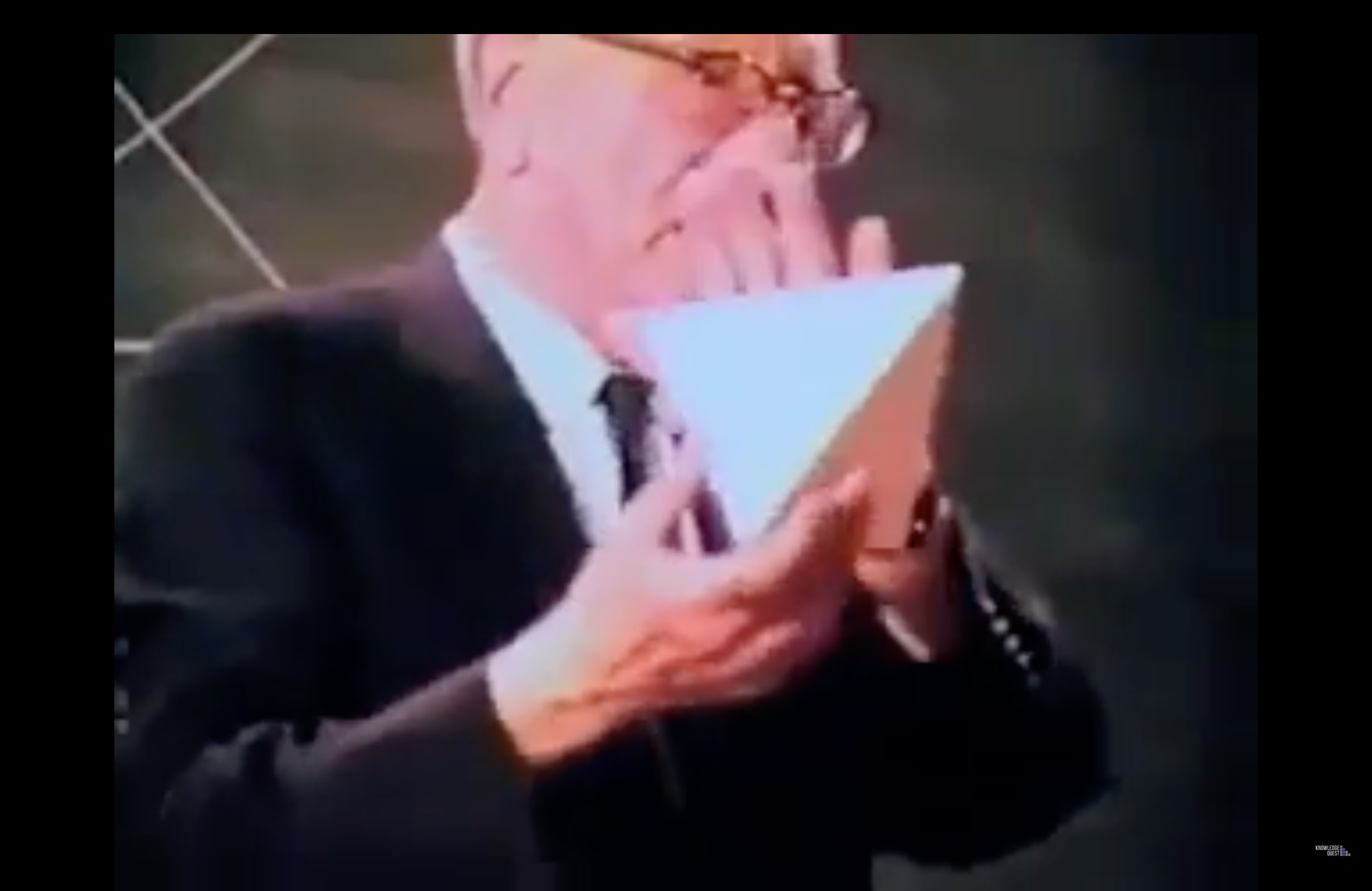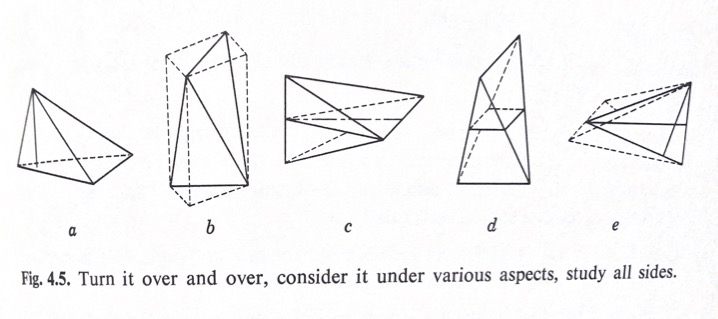Eugen Blume described Black Mountain College as the site of a "shared experimental framework" that united the sciences with the arts. We all have a pretty good picture in our heads of scientific experimental frameworks (i.e. the laboratory), but what is an experimental framework for mathematics? What does mathematical creativity look like? How is mathematics discovered?

The Hungarian-American mathematician and educator, George Pólya, had some ideas. He studied many different problems of elementary mathematics and reflected on the process of guessing, testing, thinking, writing, drawing, and proving involved in their solutions. Pólya found that mathematical ideas emerge from a number of general methods or "heuristics," in contrast to the stereotypical lightbulb illumination of genius. For him, mathematical discover was a craft that could be taught and learned.

The aim of heuristic is to study the methods and rules of discovery and invention... Heuristic, as an adjective, means 'serving to discover'... its purpose is to discover the solution of the present problem... What is good education? Systematically giving opportunity to the student to discover things by himself.
These last two lines from his 1945 best-seller, How to Solve, sound like a quote from the bulletins of Black Mountain College. In fact Pólya did not have, as far as I am aware, any association with the college. But his writings reflect and focus the educational approach and interests of his contemporary at BMC, Max Dehn.
February 12, 2025
Discovery
Reading
Discovery
Reading
Pólya's Craft of Discovery (Philip Davis & Reuben Hersh)
Resources
The Mentality of the Mathematician (Max Dehn)
Let Us Teach Guessing (George Pólya)
How to Solve It (George Pólya)